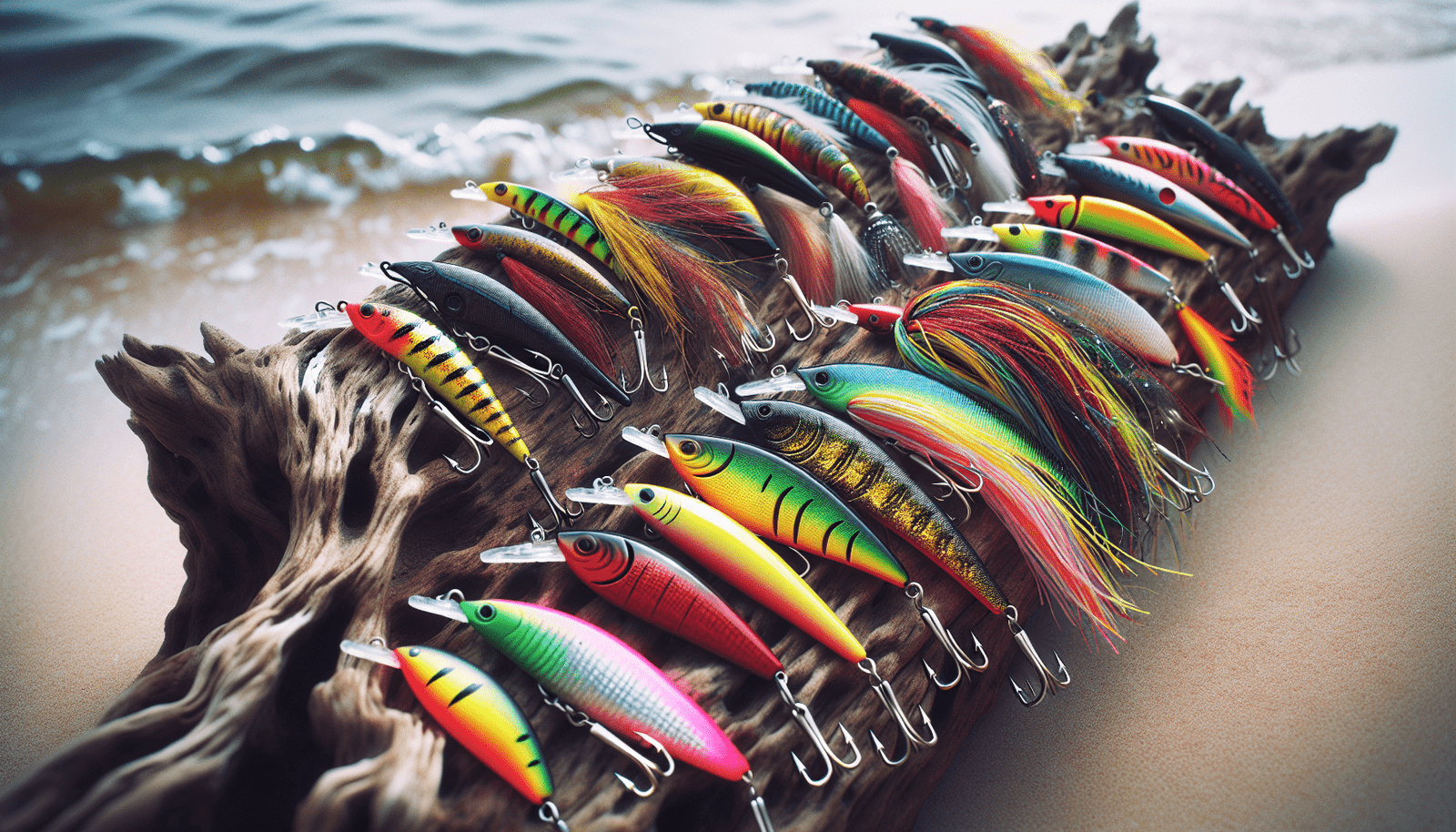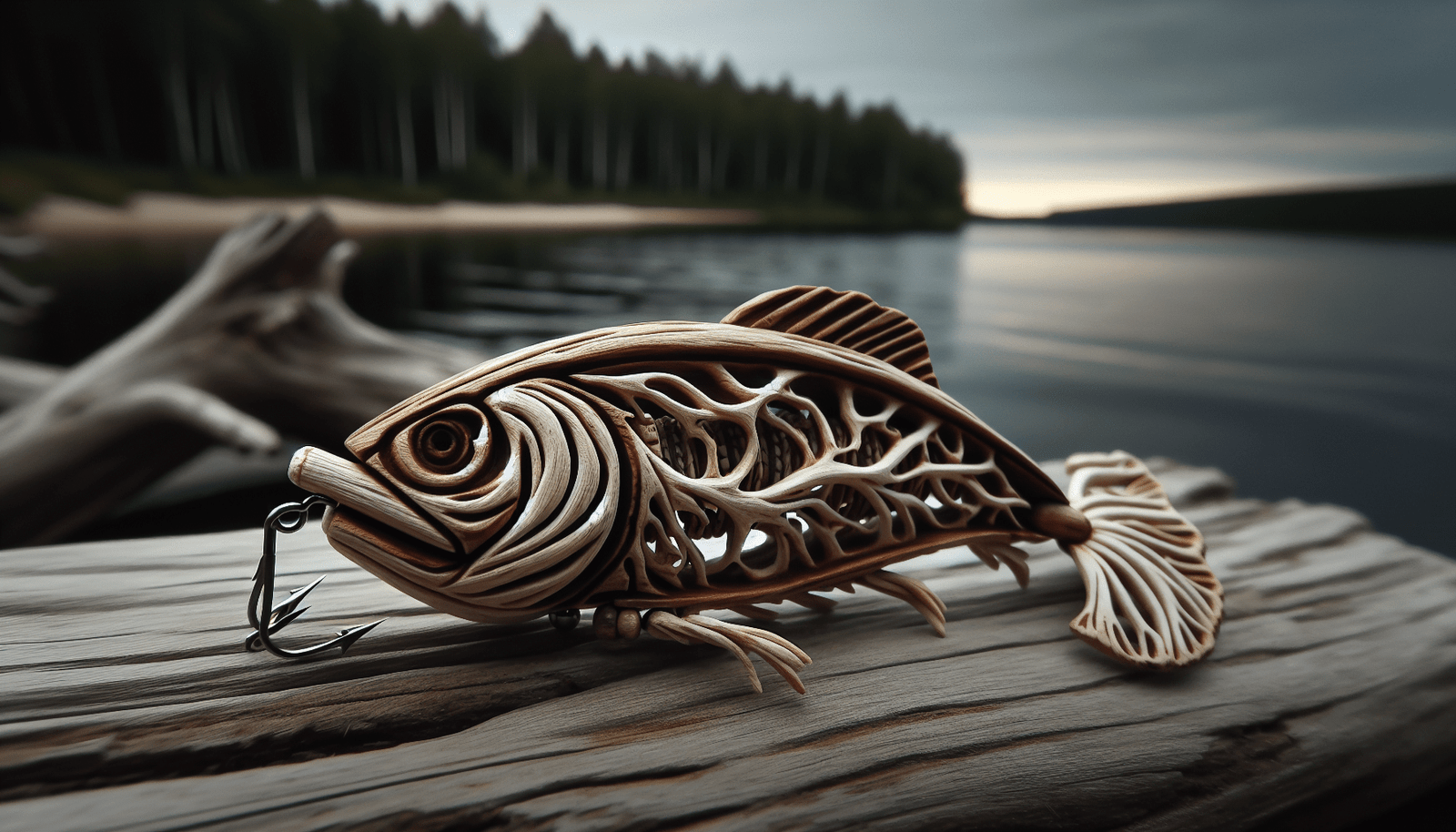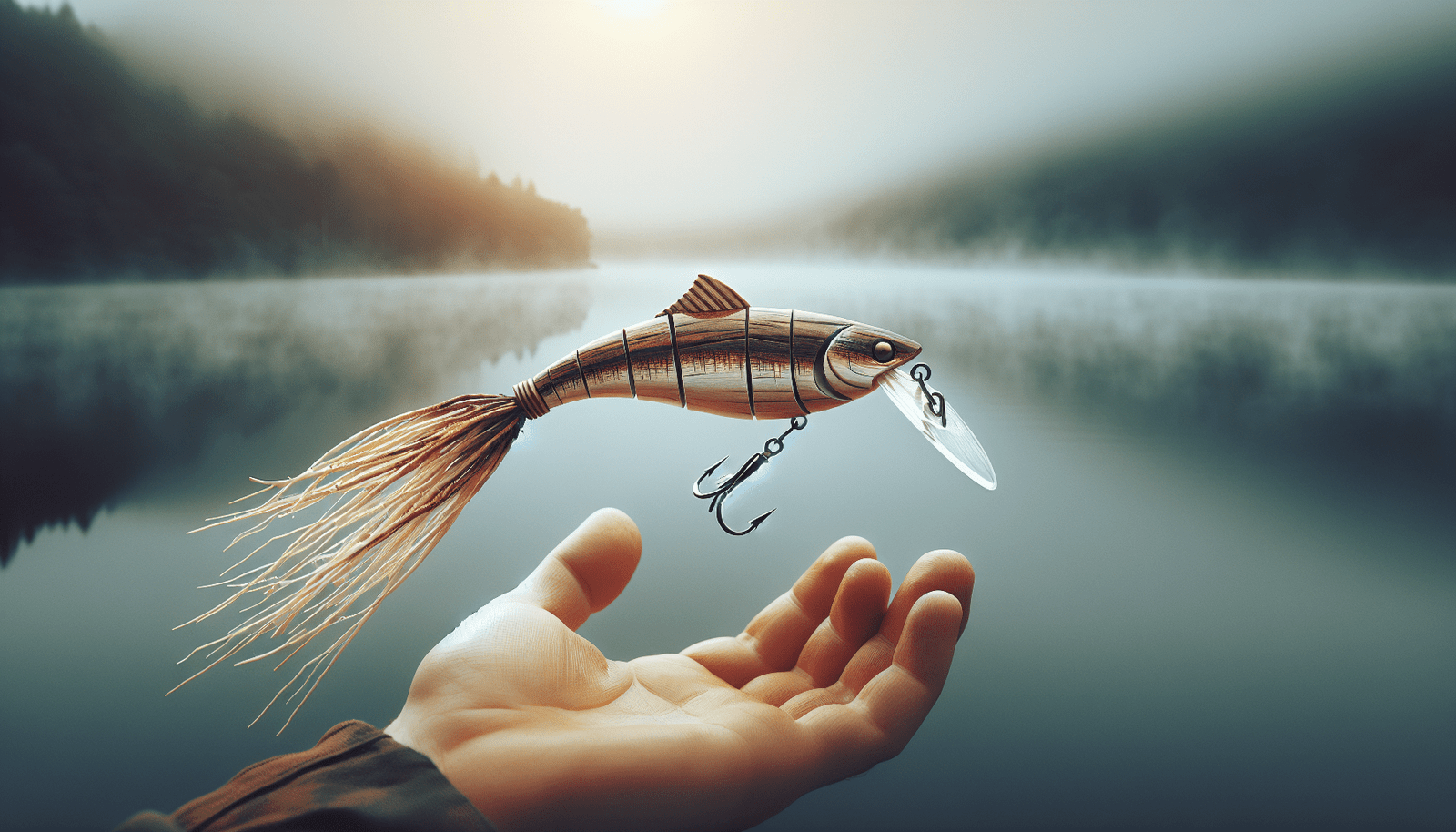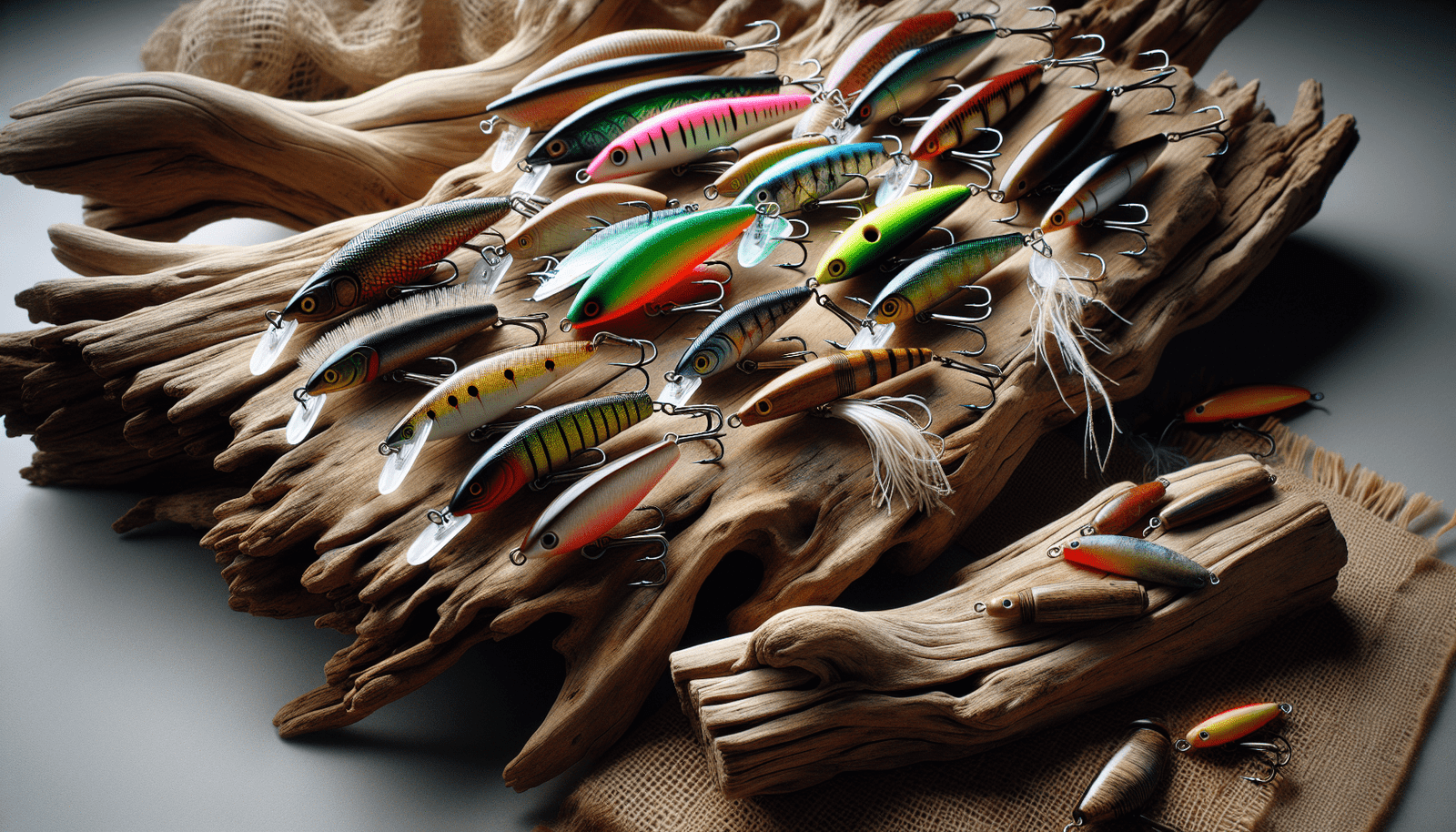Have you ever stumbled upon a piece of driftwood and wondered how it could enhance your collection of fishing lures? Driftwood, with its rustic charm and natural uniqueness, can be a fantastic medium for displaying or crafting with your fishing lures. By combining the natural aesthetics of driftwood with the vivid colors and shapes of lures, you can create a mesmerizing display or even enhance the practicality of your fishing gear.

The Allure of Driftwood
Driftwood is more than just pieces of wood that have washed ashore. Its unique transformation through the forces of nature, combined with its rustic and organic appearance, makes it a sought-after material for artistic projects and decor. The beauty of driftwood lies in its varied textures, shapes, and colors, all of which are results of the weathering process it undergoes while in the water.
Why Choose Driftwood?
Employing driftwood in your fishing antics or as part of your decor elevates the aesthetic to a new level. It’s a sustainable way to incorporate natural elements into your lifestyle, and every piece carries its story of its journey through water. Driftwood can bring a touch of nature into your living space or create a rustic theme around your fishing area, providing both decorative and functional benefits.
Fishing Lures: An Extension of the Angler
Before delving into how to use driftwood with fishing lures, it’s essential to understand what fishing lures are and why they’re vital. Fishing lures are artificial baits typically made of materials like wood, plastic, or metal, designed to attract fish by mimicking their natural prey. They come in various styles, colors, and sizes, each crafted to lure in specific fish species.
Types of Fishing Lures
Fishing lures can be categorized based on their functionality and target species. Here’s a brief overview of some popular types:
| Type of Lure | Description |
|---|---|
| Spinnerbait | Features one or more blades that spin like a propeller when in motion, creating varying noises and vibrations to attract fish. |
| Jigs | Consist of a lead sinker with a hook molded directly into it, covered by a soft body to mimic small fish or other prey. |
| Crankbaits | Hard-bodied lures that can dive and mimic the movements of swimming fish when retrieved. |
| Soft Plastics | Made of soft, pliable plastic, these lures can mimic worms, frogs, and other natural prey. |
| Topwater Lures | Designed to float and attract fish on the water’s surface, often through splashing and noise. |
Understanding these lure types will help you in creating artistic or functional displays using driftwood.
Crafting with Driftwood and Lures
Driftwood can be transformed into unique art pieces or functional displays for your fishing lures. Here’s how you can create stunning projects using these natural elements.
Display Rack for Your Lures
A driftwood display rack can transform your fishing lures into a visual masterpiece. Whether you are a fishing enthusiast or someone who admires nature-based decor, this rack can serve both as an organizer and a focal point.
Choose Your Driftwood: Find a piece of driftwood that matches the length and style you envision for your display, considering where you plan to place it.
Prepare the Driftwood: Clean the driftwood thoroughly to remove any debris. Sand it lightly to remove any potential splinters.
Add Hooks or Pegs: Select spots on the driftwood to insert small hooks or pegs. Make sure they are securely attached to hold the lures effectively.
Arrange Your Lures: Hang the lures on the hooks or pegs. Consider arranging them based on color, type, or size to create a visually appealing effect.
Secure the Driftwood: Ensure the driftwood is stable if it’s to be hung on a wall or placed on a surface.
This display rack not only organizes your lures but also adds a rustic charm to your fishing space.
DIY Driftwood Fishing Lure
If you’re up for an adventurous project, why not try making fishing lures from driftwood itself? Here’s a simple guide to spark your creativity:
Select Small Driftwood Pieces: Look for small, dense, and durable pieces.
Shape the Wood: Using a carving tool, whittle down the wood to resemble a typical lure size and shape.
Add Details: Carve grooves or patterns if desired and attach small beads or foil pieces for added attraction.
Attach Hardware: Screw in eye hooks to attach the line and hooks. Make sure they are secure enough to withstand water pressure and fish bites.
Seal and Finish: Use waterproof varnish or paint to protect the wood and add your desired color scheme.
This personalized touch brings an added sense of achievement next time you catch something with your handcrafted lure.
Bringing it Together: Tips and Tricks
Creating art and functional pieces with driftwood and fishing lures can be a rewarding process. Here are some tips to enhance your crafting experience.
Safety First
Always prioritize safety, especially when using tools for carving or attaching hardware. Wear protective gear like gloves and goggles to prevent injuries.
Creative Combinations
Don’t be afraid to mix and match different types of lures or add other natural elements to your projects. Stones, shells, and feathers are great additions to expand your designs.
Preserve the Driftwood
To ensure your driftwood remains in good condition, avoid exposing it to excessive moisture or direct sunlight for prolonged periods. Use protective coatings to extend its lifespan.
Regularly Review and Rotate
If you use your display rack primarily for organizing lures, consider rotating them regularly. This keeps frequently used lures accessible and showcases different parts of your collection over time.

Conclusion
The interplay of driftwood and fishing lures is a delightful blend of nature and function. By incorporating these elements into your spaces or fishing collection, you bring a part of the aquatic world into everyday life. Let your creativity flow, and enjoy the fusion of utility and art that driftwood and lures offer. Whether you’re designing a display or crafting your own lures, this unique combination is sure to captivate not just you but anyone who glimpses your creation.



